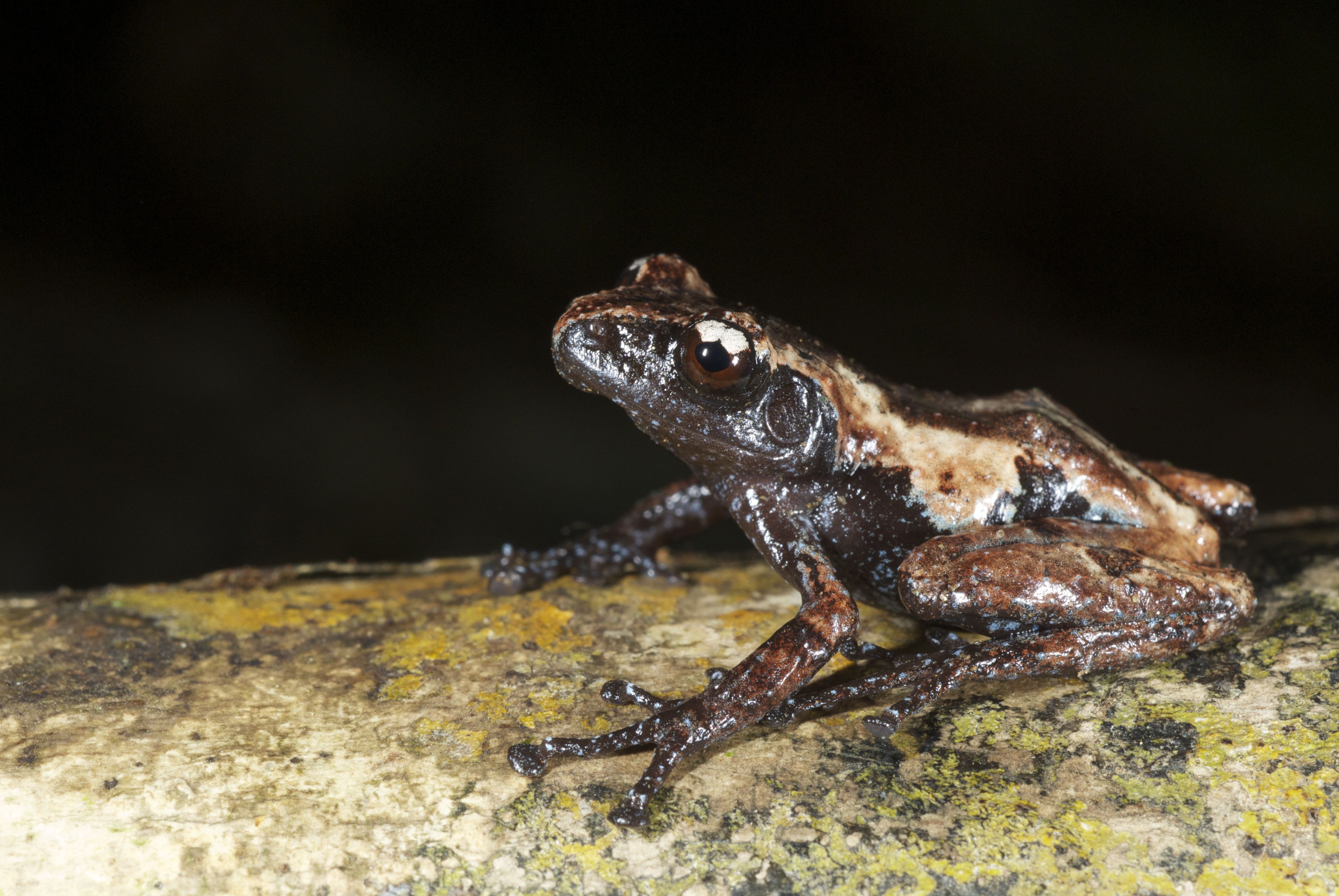| Citation |
IUCN SSC Amphibian Specialist Group 2016. Theloderma nebulosum. The IUCN Red List of Threatened Species 2016: e.T48100370A48100376. http://dx.doi.org/10.2305/IUCN.UK.2016-1.RLTS.T48100370A48100376.en. Downloaded on 08 May 2019. |
Description |
Geographic Range
NATIVE
Extant (resident)
Viet Nam
NUMBER OF LOCATIONS
1
UPPER ELEVATION LIMIT
2,000 metres
LOWER ELEVATION LIMIT
1,950 metres
Geographic Range in detail
Population
CURRENT POPULATION TREND
Decreasing
NUMBER OF MATURE INDIVIDUALS
POPULATION SEVERELY FRAGMENTED
Unknown
CONTINUING DECLINE OF MATURE INDIVIDUALS
Population in detail
EXTREME FLUCTUATIONS
NO. OF SUBPOPULATIONS
CONTINUING DECLINE IN SUBPOPULATIONS
EXTREME FLUCTUATIONS IN SUBPOPULATIONS
ALL INDIVIDUALS IN ONE SUBPOPULATION
NO. OF INDIVIDUALS IN LARGEST SUBPOPULATION
DESCRIPTION
Only one adult female and eight larvae of this species have been recorded. This is likely a reflection of the species arboreal nature, small size and cryptic colouration, as well as limited surveys in the area (Rowley et al. 2011). No information on the species population size or trends are known, however habitat loss is likely causing the population to decrease within parts of its range.
Habitat and Ecology
SYSTEM
Terrestrial
HABITAT TYPE
Forest
GENERATION LENGTH (YEARS)
CONGREGATORY
MOVEMENT PATTERNS
Not a Migrant
CONTINUING DECLINE IN AREA, EXTENT AND/OR QUALITY OF HABITAT
Yes
Habitat and Ecology in detail
HABITAT AND ECOLOGY
This species inhabits high-elevation montane evergreen and bamboo forest where the environment is very wet, with high rainfall and humidity. Tadpoles have been observed in a clutch of eight inside a small water-filled tree hollow about 1 m above the ground (Rowley et al. 2011). The area and quality of this species habitat outside of protected areas are undergoing decline due to the effects of agriculture (Meyfroidt and Lambin 2008, Meyfroidt et al. 2013).
CLASSIFICATION SCHEME
Habitats Suitability Major importance
1. Forest 1.9. Forest - Subtropical/Tropical Moist Montane Suitable Yes
Threats
Agriculture & aquaculture
Annual & perennial non-timber crops
Threats in detail
THREATS
Habitat loss and degradation, particularly as a result of the conversion of forest to agricultural land to grow cash crop plantations (e.g. rubber, coffee and tea), is an ongoing threat throughout the Central Highlands (Meyfroidt & Lambin, 2008; Meyfroidt et al. 2013). This species is likely to be threatened by habitat loss in parts of its range that extend outside of well-protected areas (Rowley et al. 2011).
CLASSIFICATION SCHEME
Threats Timing Stresses Scope Severity Impact score Invasive species Virus
2. Agriculture & aquaculture 2.1. Annual & perennial non-timber crops 2.1.1. Shifting agriculture Ongoing
1. Ecosystem stresses 1.1. Ecosystem conversion
1.2. Ecosystem degradation
Unknown Unknown Unknown
2.1.2. Small-holder farming Ongoing
1. Ecosystem stresses 1.1. Ecosystem conversion
1.2. Ecosystem degradation
Unknown Unknown Unknown
Use and Trade
Use and Trade in detail
USE AND TRADE
There are currently no reports of use or trade of this species. While other members of Theloderma are known to be in demand for the global pet trade (Rowley et al. 2011, Kunz et al. 2010), the relatively small size and comparatively dull colouration of the species may negate this potential threat.
Conservation Actions
In-place land/water protection
Occurs in at least one protected area : Yes
Conservation Actions in detail
CONSERVATION ACTIONS
Conservation Actions
This species is known to occur within Ngoc Linh Nature Reserve.
Research Needed
Addressing the lack of data is the first step towards ensuring its survival - research on the species population trends, life history, and threats would help to inform conservation decisions. |

